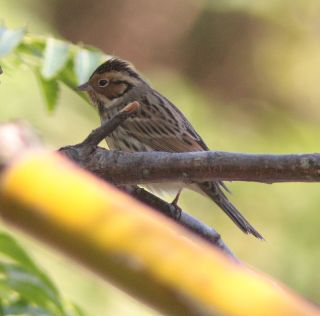A quiet start to the week, but an influx of thrushes and buntings with the north wind on Wednesday night.
A Hoopoe on Tuesday was the first since 9th September, a poor autumn for this species as with so many others. A large
phylloscopus warbler on Wednesday appeared to have no wingbars, but I think it's just a very late Arctic. The latest autumn record in Avifauna is 30th November.
Also this week, the annual arrival of Japanese White-eye is in full swing, with small parties all over. This species is mostly a winter visitor to Po Toi, arriving in late November and staying until early April with a very few over summer and none at all in September and October.



The thrush influx on Thursday brought the first Pale Thrush of the season, together with at least some Eyebrowed and more Japanese. The Brown-headed remained for the whole week and I was at last able to get a reasonable photo of this, together with a male and female Japanese



The bunting influx included more Little, together with at least three Yellow-browed and one Tristram's



This is nearly the end of autumn 2008 for me, I'm not expecting to stay on Po Toi through December.
Not a vintage autumn, so many species missing which were seen in both the previous two years, both common and rare - Himalayan Swiftlet, Pechora Pipit, Oriental Cuckoo, Ashy Drongo, Greenish Warbler, Scaly Thrush (where are they?), White-throated Kingfisher, Collared Scops Owl, Red-throated Pipit, Raddes Warbler, Grey Bushchat, Bonelli's Eagle, Dusky Thrush etc etc....
But at least the Flycatchers were in good numbers and kept everyone entertained.
From what I see reported here and hear on BirdLine, it's been the same everywhere.
[
Last edited by wgeoff at 17/08/2010 18:28 ]


